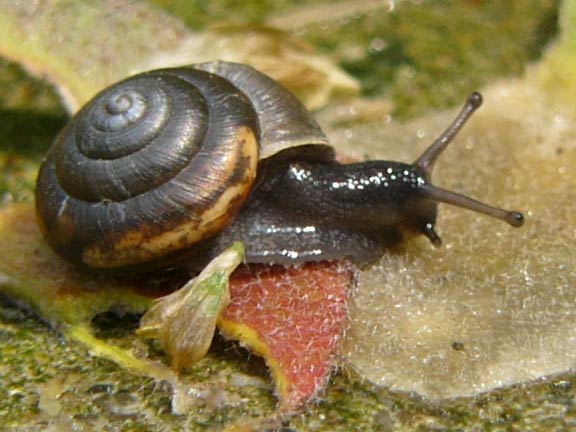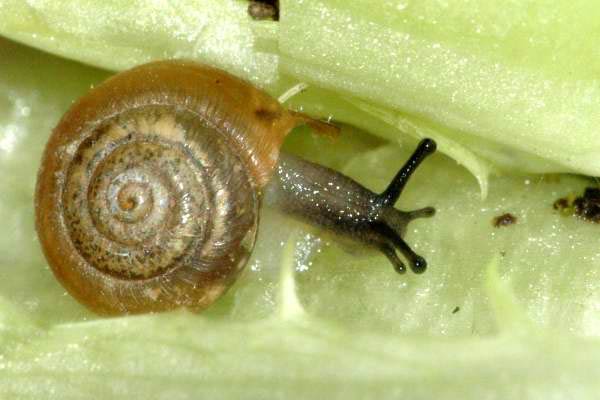Trochulus hispidus
|
Trochulus hispidus. (Photo: © Dr. Roy Anderson, MolluscIreland) |
|
Trochulus hispidus. (Photo: © M. Manas, Wikipedia) |
|
Trochulus hispidus, juvenile. (Photo: © J.K. Lindsey, The Ecology of Commanster) |
Family
Hygromiidae
Species
Trochulus hispidus (Linnaeus, 1758)
Common name
Hairy snail
Description
The shellShell:
A hard, inflexible, calcareous or chitinous structure that vary in size and may either completely encasing the animal, covering some part of it or be internal.
of this small snail is 4-6 mm high and 5-12 mm wide, with 6-7 whorlsWhorls:
Pleural of whorl. A whorl is a complete spiral turn/growth of the shell of a mollusc. The whorls are counted from the apex outwards.
. The slightly translucentTranslucent:
Allows light to pass through but prevents the ability to see distinct objects.
shellShell:
A hard, inflexible, calcareous or chitinous structure that vary in size and may either completely encasing the animal, covering some part of it or be internal.
is tan to brown. It is also covered with a dense mat of short, curved hairs. The hairs may be absent in vacant shells (due to abrasion); however, hairs will remain attached and visible in the open umbilicusUmbilicus:
A navel-like indentation or depression in the center of the shell. It may be described as open (inside of columella visible), partially closed (partly covered by base of aperture) or completely closed (not visible). The width of the umbilicus is a measure of its greatest diameter.
(navel). The body of the animal is tan to grey-black.
Native range
Europe
Distribution
North America: Canada
Europe: Czech republic, Netherlands, Poland, Slovakia, Great Britain, Ireland
Ecology
This species can occur in a wide variety of habitats.
Synonyms
- Trichia hispida
References
Anderson 2005Anderson 2005:
Anderson, R. 2005. An annotated list of the non-marine Mollusca of Britain and Ireland. Journal of Conchology 38: 607-637.; Kerney et al. 1979Kerney et al. 1979:
Kerney, M.P., R.A.D. Cameron and G. Riley. 1979. A field guide to the land snails of Britain and North-west Europe. Collins, London. pp. 288.




